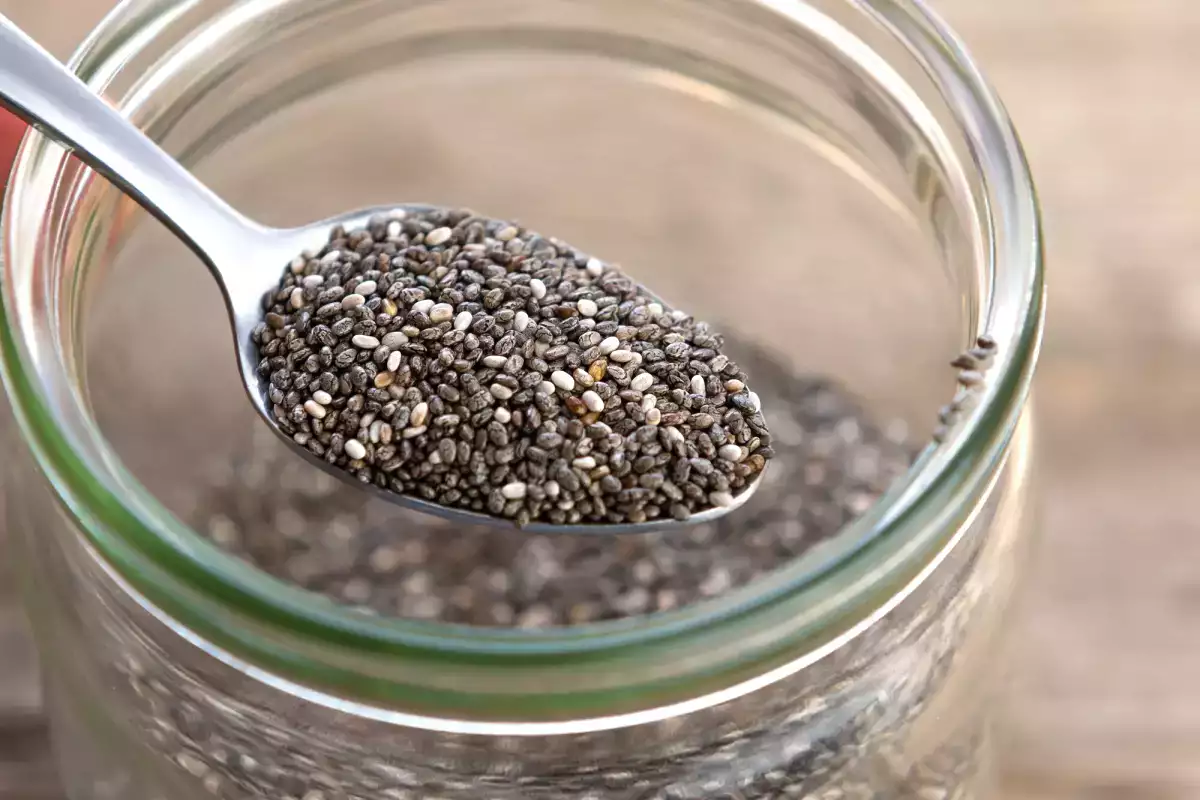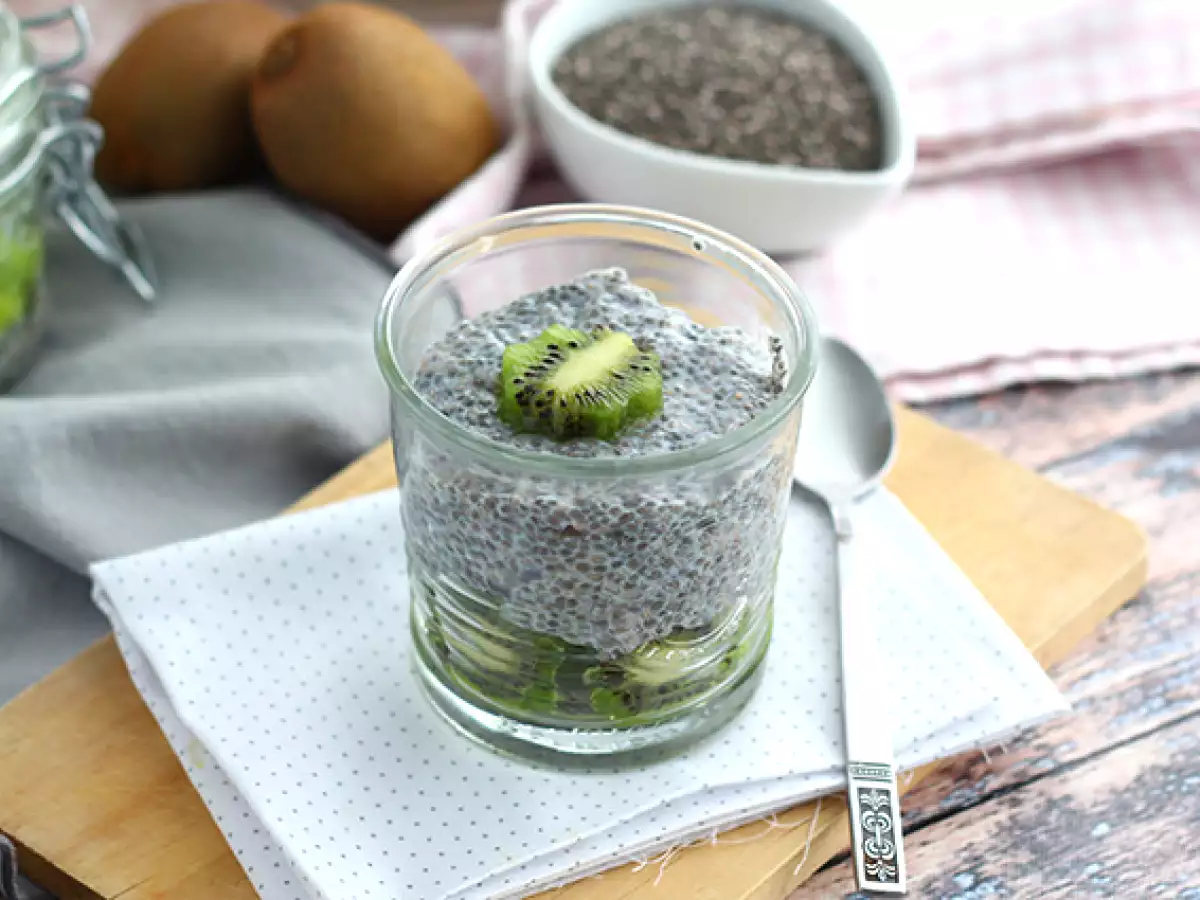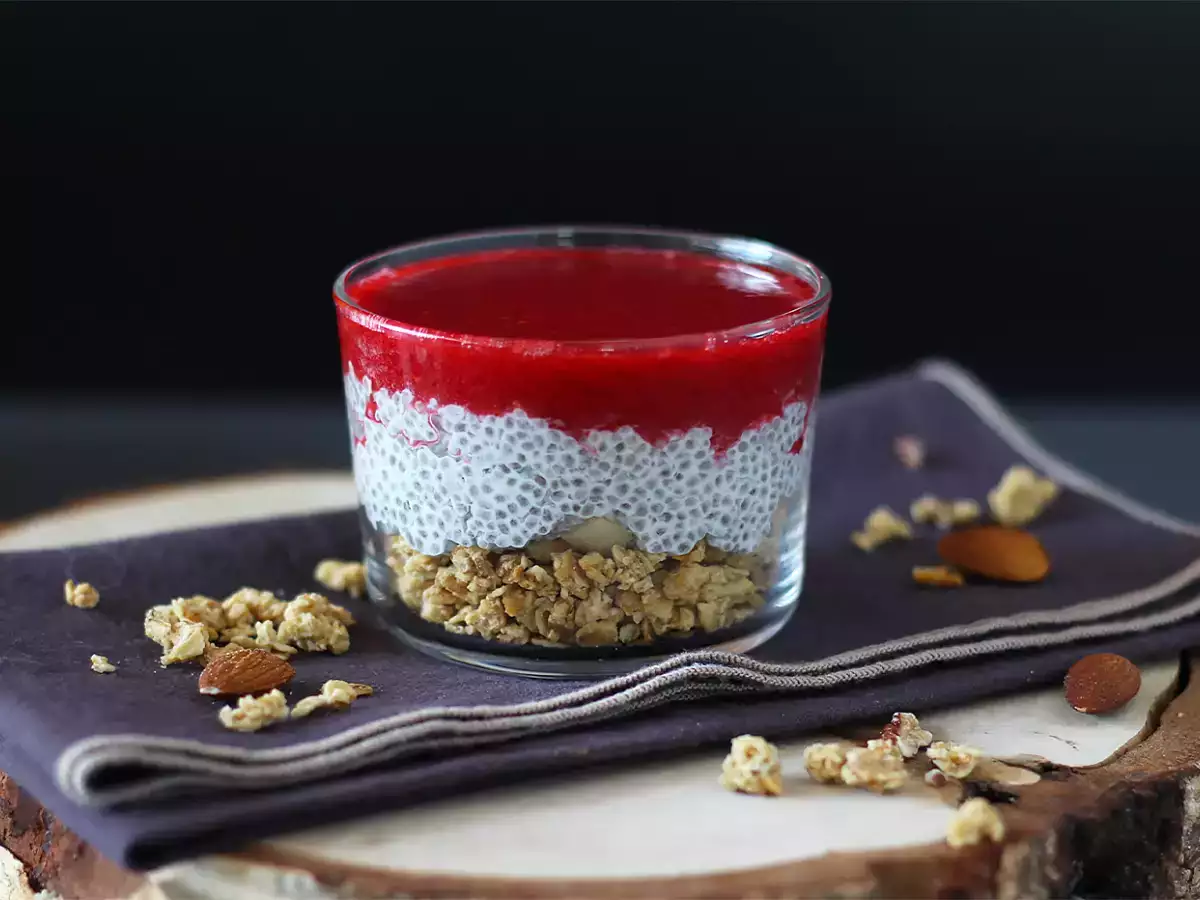Are chia seeds a wellness miracle or just another food trend that secretly upsets your gut?

Chia seeds have become a favorite for a simple reason: they concentrate fiber, protein, omega-3 and minerals in a little grain that you can throw into almost any recipe. But what really changes in your body when you consume them daily? Here's a straightforward guide - benefits, precautions and how to use them in practice.
Summary in 10 seconds
- Satiety and weight: the high fiber (≈10-11 g per 2 tablespoons/28-30 g) helps you feel full and can reduce snacking.
- Happy gut: improves intestinal transit and feeds the microbiota.
- Protected heart: good intake of omega-3 (ALA), which improves the lipid profile.
- More stable blood sugar: the fiber forms a gel that slows down the absorption of carbohydrates.
- Bones and muscles: calcium, magnesium and phosphorus support bone health and muscle contraction.
- Extra hydration: when hydrated, chia retains water and helps replenish fluids.
Benefits of including chia every day
1) More satiety and possible help with weight control
The combination of fiber and gel that chia forms in the stomach increases the volume of food and prolongs the feeling of being. In practice, this can reduce calorie intake throughout the day - especially if you often snack.
2) Regulated gut
With around 35% fiber, chia promotes softer stools and a steadier bowel rhythm. The fiber also serves as a prebiotic, nourishing good bacteria in the gut.
3) Friend of the heart
Per serving (≈28-30 g) there is ~5 g of ALA, a type of plant-based omega-3. Along with soluble fiber, this can improve cholesterol (by reducing LDL) and triglycerides, and support blood pressure over time as part of a balanced eating pattern.
4) Milder glucose spikes
Mucilage (the "gel") slows down the digestion and absorption of sugars, helping to stabilize blood glucose after meals - useful for those looking for more constant energy.
5) Micro and macronutrients that count
- Proteins: ~5 g per 2 tablespoon, useful for building and repairing tissues.
- Minerals: calcium, magnesium, phosphorus and zinc for bones, muscle contraction and immunity.
- Antioxidants: help combat everyday oxidative stress.
Possible side effects (and how to avoid them)
- Bloating/gas: gradually increase the dose and drink water. Too much fiber at once can be uncomfortable.
- Choking: dried chia can stick and swell in the esophagus. Hydrate beforehand (10-20 min) or consume mixed in moist foods (yogurt, porridge).
- Interactions/conditions: if you use anticoagulants/antiaggregants, have dysphagia, a history of intestinal obstruction or gastrointestinal surgery, talk to your doctor. If you have diabetes and use hypoglycemic agents, you may need to adjust the dose with your doctor.
- Allergy: rare, but possible - watch for signs (itching, swelling, hives).
Important reminder: this text is informative and does not replace personalized medical advice.
How much to eat?
- Safe standard for most: 1 to 2 tablespoons a day (15-30 g).
- Water: for each tablespoon of chia, drink at least 200-250 ml of fluids throughout the day.
- Consistency > exaggeration: more than 2-3 tablespoons a day usually doesn't bring extra benefits and can increase intestinal discomfort.
How to use it in practice (without complications)
Hydrate: 1 part chia to 6-8 parts liquid (e.g. 1 tablespoon chia + ½ cup water/milk). Wait 10-20 minutes until it turns to gel.
Quick ideas:
- Mix the gel into yogurt with fruit.
- Finish salads with 1 tablespoon of chia (dry, on top).
- Make a chia pudding (chia + milk/vegetable milk + vanilla; leave in the fridge).
- Add to oatmeal or smoothies.
- Use in overnight oats, pancakes or fritters.
- Spread on soups and creams to add texture.
7-day mini-route (up to 2 tablespoon/day)
- Monday: natural yogurt + strawberry + 1 tablespoon of hydrated chia.
- Tuesday: oatmeal for breakfast + 1 tablespoon of chia.
- Wednesday: salad, tomato and avocado + 1 tablespoon of chia on top.
- Thursday: smoothie (banana, cocoa, milk) + 1 tablespoon of chia.
- Friday: chia pudding (prepare in the evening) as an afternoon snack.
- Saturday: banana pancakes with 1 tablespoon of chia in the batter.
- Sunday: creamy vegetable soup topped with 1 tablespoon of chia.
Quick FAQ
Does chia need to be soaked?
Not always, but hydrating it improves digestion and reduces the risk of choking. In wet recipes (yogurt, smoothies) it already hydrates inside.
Is it better ground?
Grinding can increase the bioavailability of some nutrients, but whole chia already offers great benefits - choose what's most practical.
Is it fattening?
Chia has calories (≈140 kcal/2 tablespoon), but it helps control hunger. The effect depends on the context of the diet.
Eating chia every day can bring satiety, support the intestine, the heart and blood sugar - as long as you hydrate well, respect the amount and maintain a balanced diet. Think of it as a smart tool, not a magic solution.
Need more ideas? Our recipes are here
 Mirella Mendonça
Mirella Mendonça

Comments